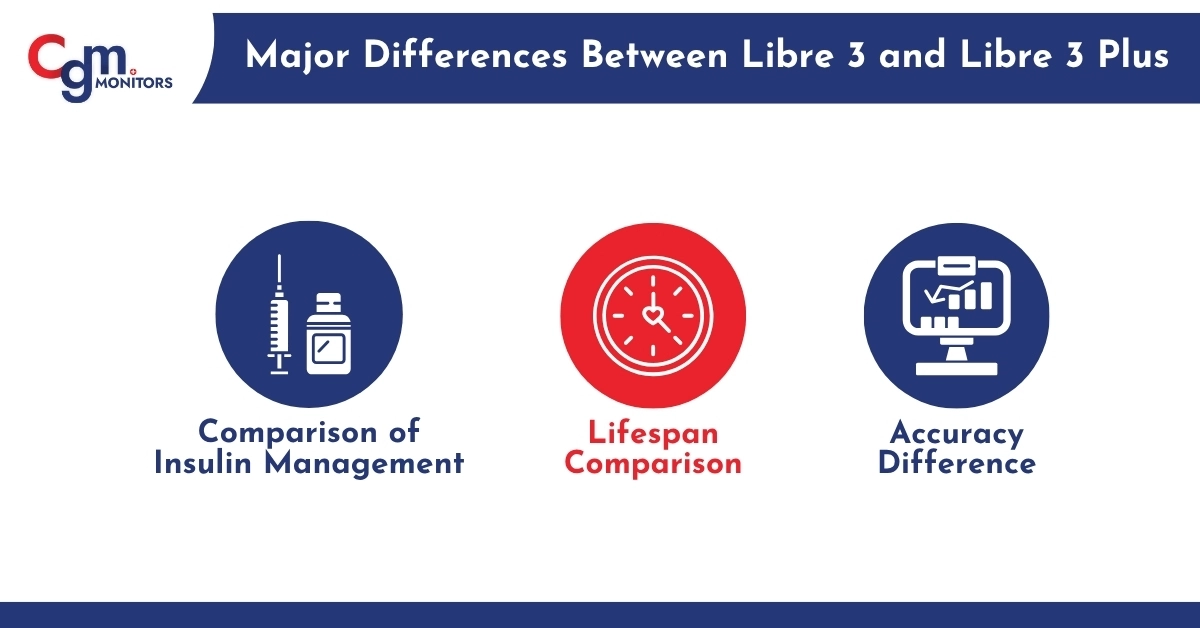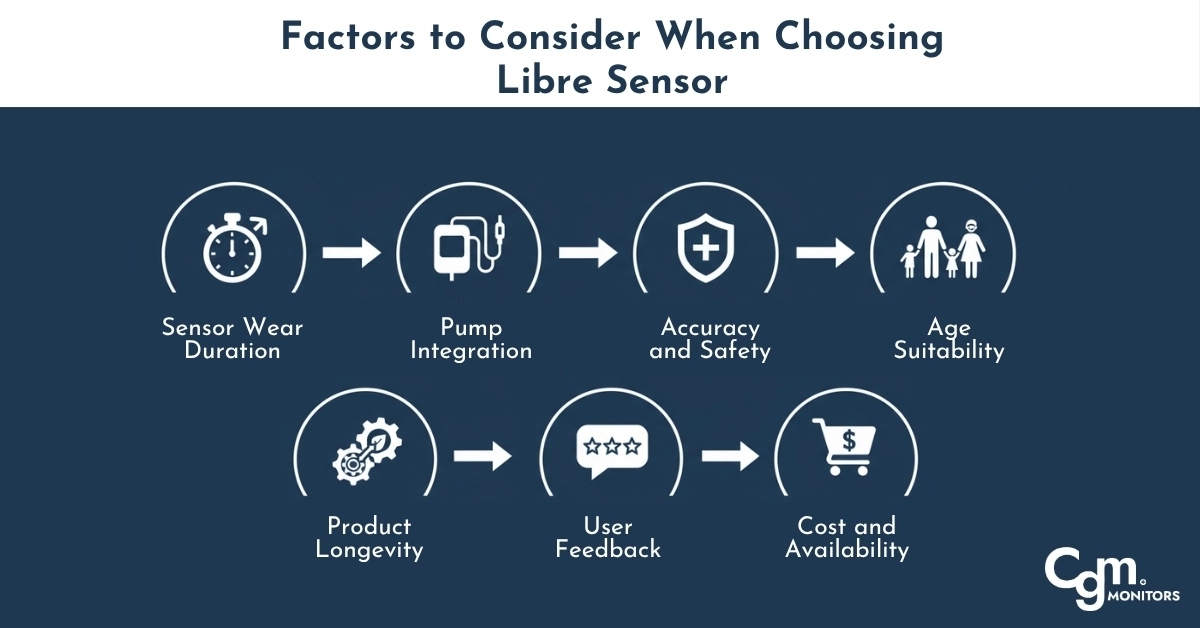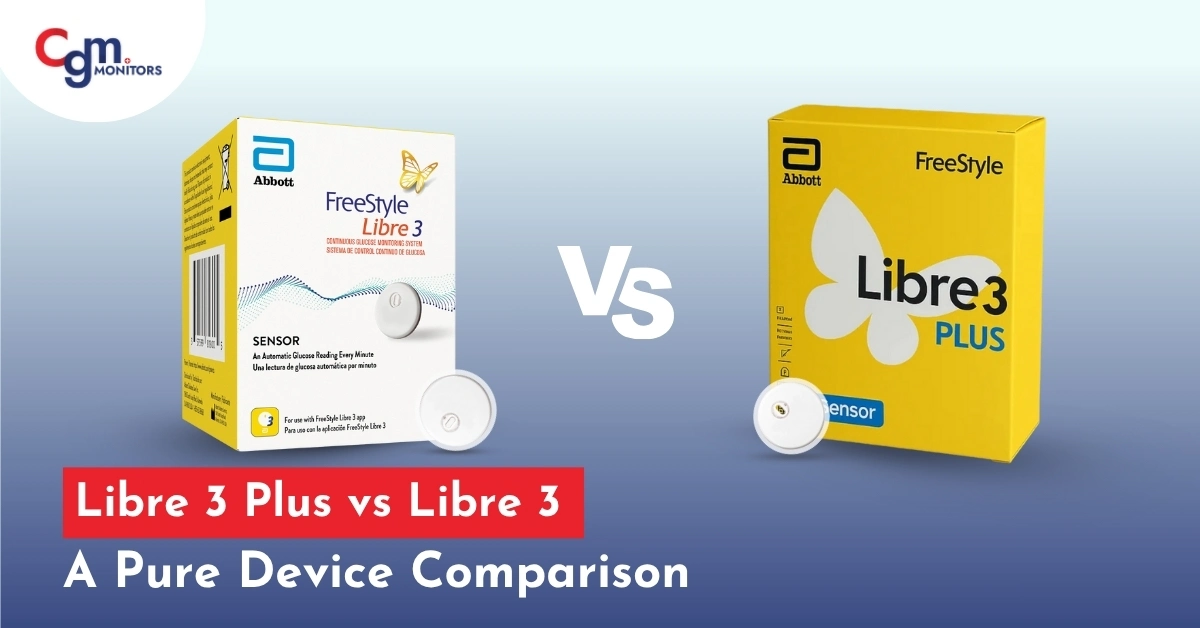Table of content
Among the most reliable continuous glucose monitors in the USA are the Freestyle Libre sensors. And the Freestyle Libre 3 sensors have been one of the most reliable in this series. Here we’ll have a look at what Libre 3 had, since it has now been discontinued, and what Libre 3 Plus has. Let’s dive into Libre 3 Plus vs Libre 3.
Please note that the unit of measuring the accuracy of CGM sensors is called MARD (mean absolute relative difference); the lower the number, the higher the accuracy. Typically, CGMs with an MARD value of ≤10 are considered to have good accuracy.
Freestyle Libre 3 Sensors
The world’s smallest yet one of the most accurate CGM sensors, Libre 3, gained trust and love from a large diabetic population.
- Sensor Size: About the size of two stacked pennies stacked together.
- Accuracy: An overall MARD of 7.9%.
- Life Span: These sensors offered up to 14 days of life.
- Eligibility: Suitable for people aged 4 and above with type 1, type 2, or gestational diabetes.
- AID Compatibility: Not compatible with any automatic insulin delivery (AID) system in the US market.
- Application: Easy application on the back of the upper arm in adults, and the upper buttocks are also indicated for kids.
- Reader/App: Depends on the choice of the user; using a reader is easier for people who want to avoid some errors (like the connection ones) or the phone battery drainage issues.
Please note that the Libre 3 users require a new prescription to claim the new Freestyle Libre 3 Plus sensors, and our experts at CGM Monitors are always there to help you in this regard.
Simply opt for our ‘Bill to Insurance’ option, and our representative shall assist you further.
Freestyle Libre 3 Plus Sensors
The Libre 3 Plus is another addition to the Libre family with a similar look and ease of application, and smarter features.
- Sensor Size: Same as the size of the Libre 3 sensor, i.e., two stacked pennies stacked together.
- Accuracy: An overall MARD of 8.1% and 8.2%.
- Life Span: These sensors offered up to 15 days of life.
- Eligibility: Suitable for people aged 2 and above with type 1, type 2, or gestational diabetes.
- AID Compatibility: Compatible with the latest automatic insulin delivery (AID) systems in the US market, such as iLet Bionic Pancreas and twiist™ automated insulin delivery system.
- Application: Easy application on the back of the upper arm, just like the Libre 3.
Many insurance program is meant for patients with type 1, type 2, and gestational diabetes. Rest, it varies depending on the type of insurance you have, e.g., Medicare/Medicaid or any other private insurance. Veterans and TRICARE coverage may be checked here.
As far as the insurance coverage is concerned, please note that according to the Freestyle, Freestyle Libre 3 Plus sensors have the same Medicare coverage as the Freestyle Libre 3 sensors.
Major Differences Between Libre 3 and Libre 3 Plus
While the overall usage experience is easier, the following are some of the major differences between these CGM sensors:
- Easy Insulin Management: The Libre 3 Plus is compatible with automated insulin pumps, aiding users in easy insulin consumption while eliminating needle pain.
- Lesser Changing Hassle: Instead of up to 14 days, the longer lifespan of up to 15 days adds some more comfort.
- Reduced Age Criteria: Unlike Libre 3, which was suitable for individuals with diabetes aged 4 and above, the Libre 3 Plus is suitable for diabetics aged 2 and above.
- Accuracy Difference: The Freestyle Libre 3 boasted an impressive overall MARD of 7.9%, whereas the Libre 3 Plus has an overall MARD of 8.1% and 8.2%.

Factors to Consider When Choosing Libre Sensor
- Sensor Wear Duration: Libre 3 Plus lasts one day longer (15 days vs 14 days). It’s a small improvement, but for people who prefer fewer sensor changes, this is a plus.
- Pump Integration: Libre 3 Plus supports automated insulin delivery (AID) systems, which means it can connect with compatible insulin pumps for closed-loop control. If you plan to switch to an insulin pump in the future, Plus is the smarter choice.
- Accuracy and Safety: Libre 3 Plus follows more rigorous performance standards, offering improved accuracy in critical glucose ranges—particularly for hypoglycemia or hyperglycemia alerts.
- Age Suitability: If the CGM is for a child under 4 years, Libre 3 Plus is the only suitable option since it’s approved for ages as young as 2.
- Product Longevity: Abbott is gradually transitioning from the Libre 3 to the Libre 3 Plus line. Choosing Libre 3 Plus ensures better long-term support, app updates, and future device compatibility.
- User Feedback: Most users find Libre 3 plus reliable and easy to use especially if they get a monthly subscription. Moreover, some early Libre 3 Plus users have mentioned slightly more insertion discomfort or occasional false alarms, but these experiences vary and often improve with newer batches.
- Cost and Availability: Libre 3 Plus is currently more affordable or easier to find in regions, but Libre 3 has been phased out. So Libre 3 Plus has become the standard replacement.

Which One Should You Choose?
If you want a future-ready CGM with longer wear time, improved accuracy, and compatibility with upcoming insulin pump systems — Libre 3 Plus is the better investment.
Conclusion:
Both Libre 3 and Libre 3 Plus are excellent CGM systems designed to simplify diabetes management through continuous, real-time glucose tracking.
However, Libre 3 Plus clearly stands out as the more advanced and future-ready option. It offers an extra day of wear (15 days), supports pump and AID integration, and is approved for younger users starting from age 2. Most importantly, it aligns with Abbott’s upcoming CGM roadmap, ensuring better compatibility and long-term support.
On the other hand, Libre 3 remains a reliable and cost-effective choice for those who don’t need pump connectivity, but from September 2025 onward, it has been discontinued permanently.
Disclaimer: This blog is for informational purposes only and does not constitute medical, legal, or professional advice. While we strive for accuracy, errors or omissions may occur.
Some images in this blog may be AI-generated or for illustrative purposes only. Device images belong to their respective manufacturers and are used here for reference. Actual products may vary.







Write a comment
Your email address will not be published. All fields are required